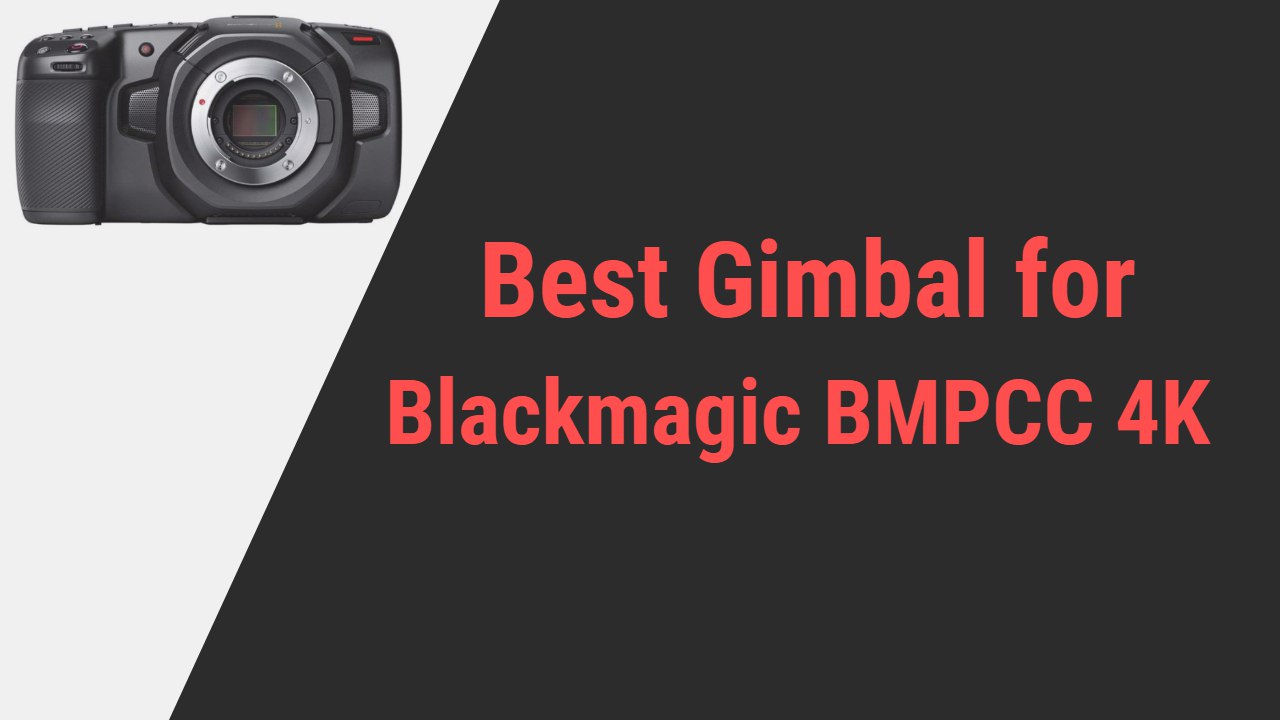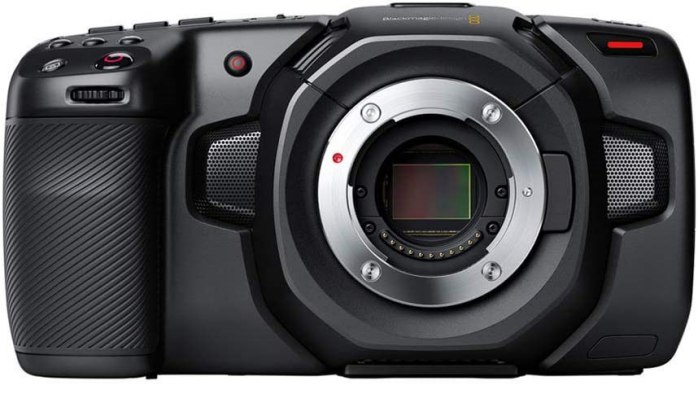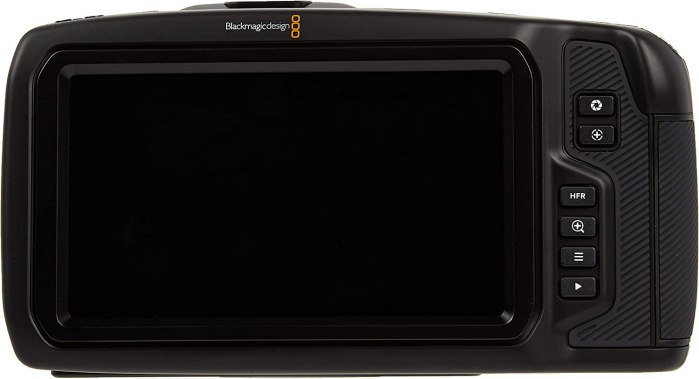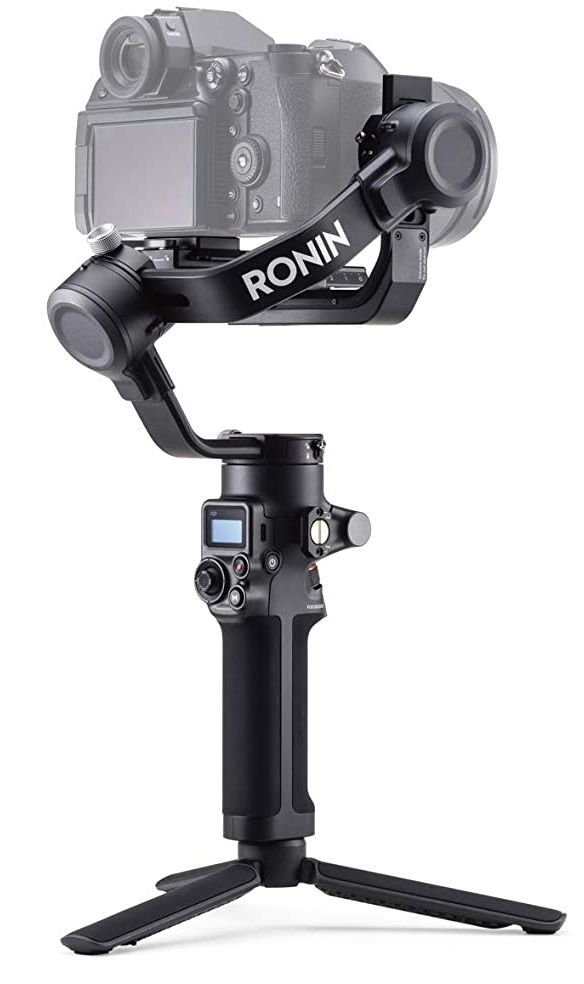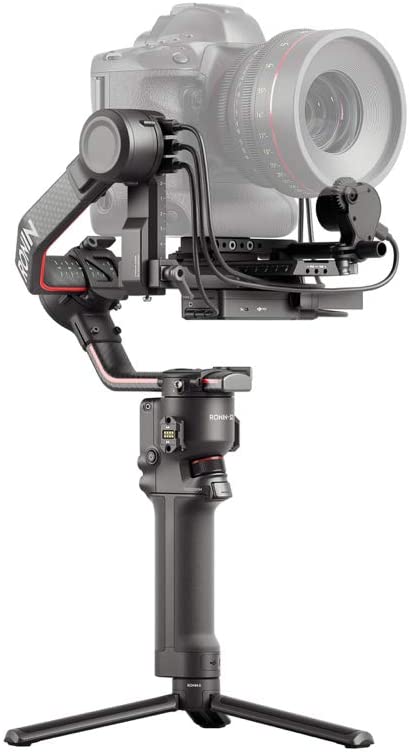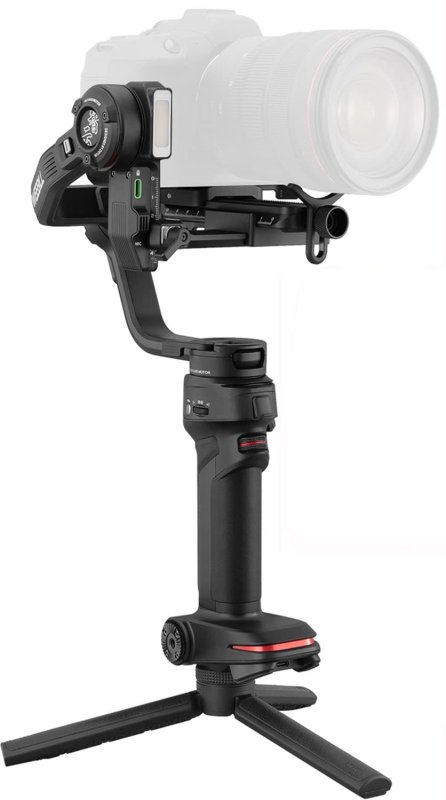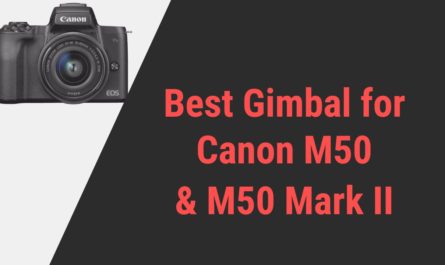If you are a keen filmmaker, there is no way I have to tell you that Having an advanced camera isn’t the key to better photography; you have to have the ideal companionship of tools to achieve that flawless filming adventure. And for that, nothing can beat the unquestionable thrill of a gimbal.
The advanced camera roll in this scenario is satisfied by the super comfortable and compactly designed Blackmagic Pocket cinema camera 4K. The outstanding camera with the steadier intention to capture sharpness with the helping hand of some promising functions.
As a matter of fact, if you are familiar with the Black Magic 4k camera, you would know the camera doesn’t participate in any in-built stabilization. This is why A gimbal will be needed to ensure the freedom of steadier capture and buttery smooth footage for your Blackmagic camera.
Blackmagic BMPCC 4K
Note:
All the gimbals mentioned here are tested with BMPCC 4K and work perfectly fine.
| DJI RSC 2 (Best Overall)

|
| DJI RS 2 (Most High-end | Compact/Lightweight & Comes with Advanced Features)
    |
| Zhiyun Weebill 3
    |
Now the trickiest angle is getting one right pair of gimbals for something as powerful as 4K; there are some versatile gimbals that can do the job pretty well.
Cutting some slack to your heavy effort and hassle for finding that ideal one, I am going to list down some of the gimbals possessing infinite potential and convenience with the things you need most in your ideal gimbal; scroll down to get the perfect match of BMPCC 4K gimbals right at your fingertip.
Best Gimbal for Blackmagic Pocket Cinema Camera 4K
1. DJI RSC 2
Being a popular cinema camera, Black Magic 4K has gained quite the fandom for its high technology features. When it comes to stabilizing the BMPCC 4K, I go no further than the highly trustworthy and my personal favorite DJI RSC 2.
The gimbal is quite the star in the photography world, one with ravishing features, decent payload, and relevant power that wonderfully works with the Blackmagic 4K pocket cinema camera.
With some outstanding upgradation compared to its predecessor and a sophisticated design, this RSC 2 solved half of my trouble during that professional filmmaking. Let’s have a look over its dominant features.
Camera– Blackmagic Pocket Cinema Camera 4k
Gimbal– DJI RSC 2 Gimbal
Being a Pocket cinema camera and that too a very popular edition, the BMPCC 4 K’s first priority is to provide convenience during professional shooting; this is the major reason I opted for the DJI because they are known for that. RSC 2 requires no effort into the mounting and stuff. The improved Manfrotto plus Arca Swiss camera mounting system takes care of calibration and stuff.
The upgraded version of dual layered quick-release plates that can be detachable if wanted plays their part in adoring straightforward mounting.
All I have to do is add my BMPCC 4K on those plates, slide it in the gimbal and lock the position; now remember, before the whole setup, I added the relevant lens to avoid the disbalancing.
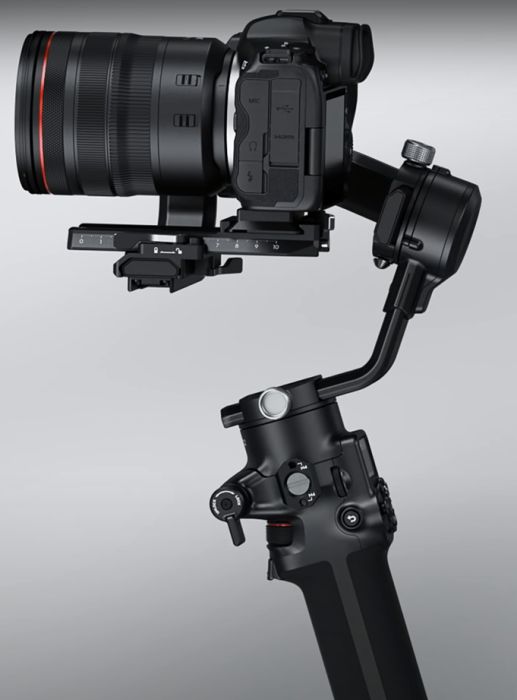

I also use a counterweight for carrying additional accessories without interference, and since the RSC 2 gimbal has the potential to carry the 6.6 pounds of payload, there isn’t any trouble handling such weight.
Now comes the design; despite the feature, one must always notice the look of the gimbal, and DJI never disappoints with that. The highly ergonomic structuring, sophisticated design, and wonderful control all together form an outstanding creation.
The gimbal composite material forms a rigid body with immense durability, assuring the strength and security of my BMPCC 4K. In contrast, the 2.65 weightage keeps the comfortability in touch.
Apart from the stabilization, the gimbal is more known for its infinite balance; you can see it once you are familiar with its practical usage. After securing my BMPCC 4K and locking each axis to secure, I usually tap the auto-calibration from the setting.
I recommend you perform the step at the earliest because this will give your camera a relevant positioning by providing motor stiffness value ultimately to avoid the rebalancing.
In addition, the gimbal also has the additional mounting thread to attach the mini tripod at the bottom.
The RSC 2 is a master in providing a steady balance throughout the dynamic subjects or fast-moving scenario shooting; Now, this is the primary duty of any gimbal but what impressed me is the way RSC 2 does it.
The expertise of the DJI titan stabilization algorithm and better motor working ensure better stabilization and fluidity in the footage. Since the BMPCC 4K camera lacks in-built stabilization, I believe this is the best thing that happens to me during its usage.
Except for the primary stabilization, the gimbal also has the super smooth stabilization mode; this mode enables the buttery smooth flow to low angle and fast-moving shots. This can be assured by enhancing the motor stiffness value.
This smoothness flows in the most typical angled, and shooting mode, which is more enticing as the highest resolution of BMPCC 4K gets amplified with the ability to shoot creativity.
The gimbal allows filming motion function mode, including timelapse, panorama, and time tracking. And I must say I am pleased with the multiple follow modes and 3D rolling and stuff.
Like every other thing, the gimbal qualifies as being best at controlling and management; I love the fact that I can access the gimbal’s as well as 4K controls directly from the gimbal. This can be achieved through the smartphone DJI Official application.
This application can make frequent interference with the camera’s setting almost negligible, which is one most the thing required if you want smoothness in the footage. Other than that, there are a few basic dials on the barrel that allow handling basic settings.
This whole thing can be visioned on the super intuitive Black and white OLED panel that is sized in one inch to display the content of the camera or gimbal setting.
Then there is one live feeding supporter; yes, there is no way I am not going to use a transmitter with the DJI RSC 2 gimbal. Thus, I have brought the DJI Raven eye 1080P transmission to allow the live feeding of whatever the camera’s eyes see; this makes the filming super effective.
As much as I have had fun with the Transmitter, there is also something I very much adore, and that is the improved Active Track 3.0. This is responsive enough to keep pace with the fastest-moving subject, and out of curiosity, I have tried filming myself with the same Active Track, and it’s quite fascinating how the camera filmed me well without losing the focus. So yeah, that’s wonderful enough.
And the last, the RSC2 is designed with two powerful and reliable lithium-ion batteries that charge 3400 mAh. These batteries are empowered enough to grant 14 hours of straight filming within a single charge; amazing, isn’t it?
And once the battery gets drained off, you never believe how much less it would take to be recharged again, just two hours, and the battery will be back on track; this battery thing is the ultimate treasure to my BMPCC 4K working.
Why should you buy it?
Several reasons, but I am going to stick with the convenience; My BMPCC 4K is much more adaptable to the comfortability provided by DJI RSC 2 whilst the function and creativity also play their part, so yeah, the whole package deals at a reasonable price tag.
Pros
- 6.6 Payload and least 2.6 weight
- Support the Live feed through the transmitter
- Improved DJI Titan stabilization
- Quick charging with integrated grip handle
- Dual-layer Manfrotto mounting
- Improved Active Track 3.0
- The foldable design and underslung mode
- Super Smooth stabilization mode
Cons
- Weight could be an issue
- Controlling could be easier
2. DJI RS 2
DJI RSC 2 is quite a convenient option for BMPCC 4K, but you don’t have the wisdom to do something out of the ordinary; capture something that doesn’t relate to your regular filming. Such innovative dreams can now come true with the rightful pairing of a professional gimbal which is none other than the DJI RS 2.
One of the most popular, adored, and potent gimbals that function none much less than the beast can now accompany your Blackmagic 4K Pocket cinema camera to transform filmmaking skill into something out of the world.
The redesigned model of the gimbal with sophisticated structuring feels like it was made for my camera only. Let me give you a valid and deep argument on why so
Camera– BMPCC 4k
Gimbal– DJI RS 2 Gimbal
Let’s talk about the primary duties at first, the Quality stabilization, now if you can see from a user perspective, the gimbal has the DJI regular but effective DJI Titan stabilization technique, but when you get the precise look, you will see how wonderfully it fulfills the obligation of BMPCC 4K in-built stabilization and grant flawlessly perfect shot.
Above that, the gimbal also uses the increased motor torque, which can only be provided in the Super Smooth Mode, enabling this mode, and your low angle, fastest running shot gets buttery smoothness along.
With the prior hand of BMPCC 4K effective resolution, I was fond of exploring creativity; things get better with the RS 2 providing different creative modes for the same.
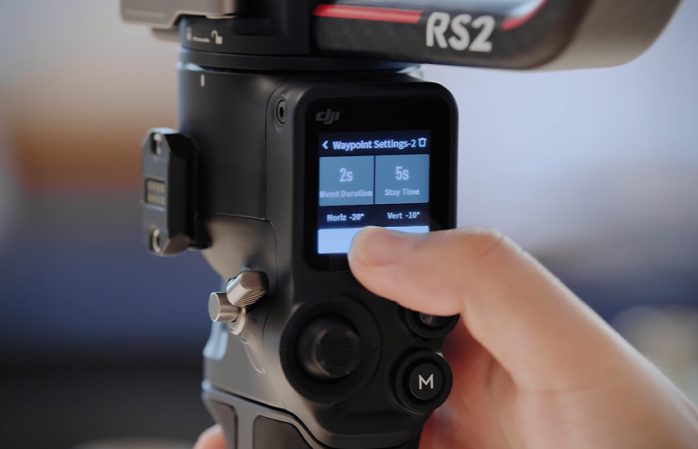

Now you can frame the subject in multiple follows, 3D roll, and rotation along the intelligent motion function like time-lapse and panorama shooting.
But above all, there are some hidden creativities you can embrace in the form of a time tunnel that creates a gorgeous shot combining the roll motion and hyper lapse and creating a twist of space and time.
Other than that, the force mobile allows your camera to follow the smartphone’s movement, interfering with the phone’s gyroscope.
The gimbal features a sturdy body with a fashionable outlining; the strength of the gimbal comes from the top-notch graded material, which also takes care of durability.
The gimbal’s axis pretty much uses the carbon fiber mix to form the strongest yet least-weight body that might come in handy during the travel shoot.
The gimbal does possess ergonomics, but I can implement additional comfort by accessorizing my gimbal with the dual handle grip and mini tripod, which can be used as an extension handle.
And when you hold the gimbal, its least weight of 2.9 pounds won’t let you feel a thing in your hand, ensuring that it wouldn’t bother you during professional shooting.
The gimbal encourages the easiest yet most secure mounting system, which is why it goes with the Manfrotto plus Arca Swiss camera mounting system. I personally like this because it almost made my work negligible.
I just pull out the two removable quick-release plates, attach them to the camera and then slide it inside the gimbal. After the camera gets mounted, I would engage with the axis locking and positioning of the camera and cross-check the balance by moving the camera upward and backward.
This definitely grants the balance, and then it’s time for the gimbal to turn on; I stick to the Auto calibration just to make sure of the positioning. This can be achieved via the fine tune knob, where your motor stiffness value gets decided, and your camera will be positioned accordingly.
One of the key factors in mounting is always to mount your camera with the accessories on it, like the lenses and stuff, to avoid rebalancing.
Talking about accessories, the gimbal can take a lot more when it comes to carrying third-party accessories. A maximum of 10 pounds of the payload is enough to give you the freedom to add whatever you want.
Now we are talking distinctively; I am going to add the supremacy of transmission system support; live feeding can be possible in the gimbal when you carry a DJI RavenEye transmission system; this transmitter allows you to get the vision of what your cameras see in order to make things effectively interesting.
And for the same visionary purpose, the gimbal features this highly intuitive and outstanding full-colored LCD panel that supports the wide coverage vision with the 1.4-inch body.
The gimbal LCD is different from others; it allows not just monitoring but also access, like shooting different modes and stuff.
The controls are the simplest for the RS 2, and one of the fascinating things I like about it is the gimbal not only interferes with its own setting but also allows the BMPCC 4K essential setting parameters to control via the panel. Now the gimbal controlling support has two different techniques.
First, the gimbal can use the smartphone Ronin official application to access the basic settings, and the next will be the physical dial like the Auto calibration with fine tune knob, focus configuration, or switching portrait mode with the dial.
The RS 2’s whole operation runs on the strongest hold of two powerful lithium-ion polymer batteries. The batteries are securely included in the cartridge design.
Sourced with a high potential charged to 1950 mAh, the gimbal can grant constant filming operation for up to 12 hours straight when fully charged.
The battery takes much longer to be recharged quickly due to the courtesy of PD and QC fast charging port; 1.5 hours is enough for the batteries to get their juice. It’s indeed a complimentary charm to BMPCC 4K low battery support.
Why should you buy it?
In that matter, the market is flooded with gimbals, but if you want to take things professional level, then this is the key. Summing up, you have noticed DJI RS 2 can do anything; quality stabilization, responsive controls, immense creativity, and convenience; every aspect is perfect to be carried with any pocket camera, so just give it a try if you want things professional.
Pros
- Longest runtime and quickest charging
- Quality stabilization with Titan
- Creative function shooting
- Easy function motion modes
- Live feed streaming support
- Active Track and force mobile
- Axis lock and fine-tuning knob
- The highest payload of 10 pounds
- Additional mount for accessories
- Intuitive LCD screen
- Comes with the splashproof case
Cons
- Doesn’t come pocket-friendly
3. Zhiyun Weebill 3
In the photography world, some names have created quite a charming impression, and when it comes to the gimbal, you have to be sure about what you are getting.
One of these popular brands is Zhiyun Tech which ideally pleased me with its impeccable innovation and user-friendly creation approaches.
This is the reason why I am mentioning their wonderful gimbal Weebill 3 here. As long as we move forward, I believe apart from the professionalism and convenience, why don’t we try the most straightforward and comfortable stabilizer?
That’s when I came up with the idea of Weebill 3. The gimbal, indeed, is a masterpiece, but what makes it so and how it would benefit my BMPCC 4K filmings what’s I am going to discuss
Camera– Blackmagic 4K Pocket Cinema Camera
Gimbal– Zhiyun Weebill 3 Gimbal
The gimbal supports the easiest mounting, The simplest quick-release mechanism, and is all set to go even with the heaviest object. The whole mounting system works with the dual quick-release plates attached to the cameras and then sliding to the gimbal.
If you are talking about the BMPCC 4K, the weight isn’t much larger to worry about, so you slide the camera into the gimbal and lock the position. The Magnetic wrench embedded in the gimbal design secures the camera’s parameters.
The camera is configured to carry a lot of weight; there might be a problem that the gimbal doesn’t know how much weight it can carry along, but speaking to my experience, the weebill 3 has got quite the experience.
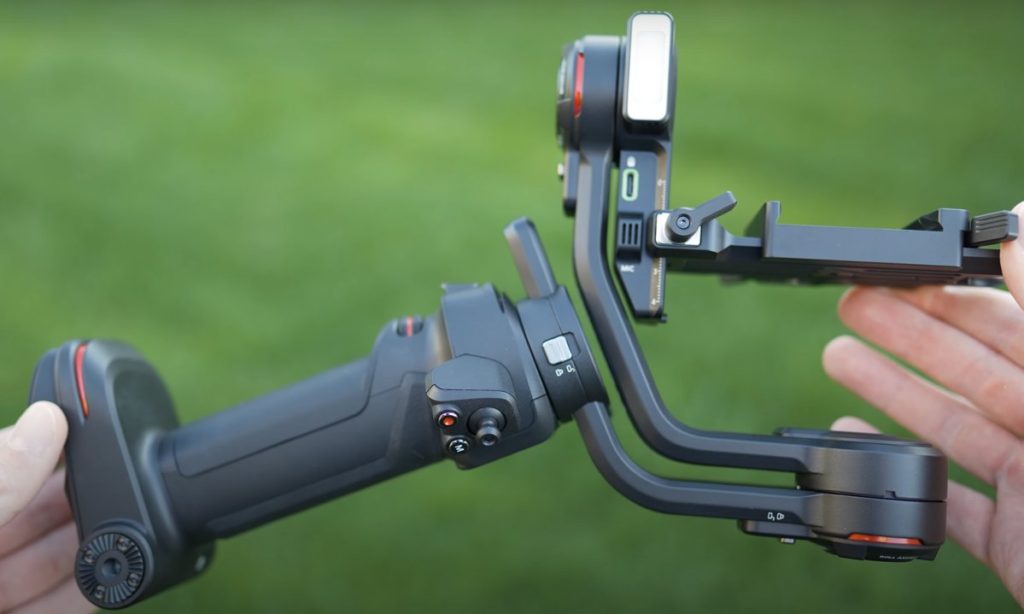

My BMPCC 4K, with the 1.5-pound weight carrying an advanced lens, a focus meter feels the lightest in Weebill 3 hand and its subjects like there is still space for other additional accessories which can be mounted with the same quick release mechanism.
With the rightful companionship of a powerful motor, the gimbal is capable of granting the optimized stabilization algorithm throughout the fastest running shot and dynamic subject even to the low angle shot.
This quality stabilization makes things better for the BMPCC 4K regular filming or the other creative modes if indulged. The gimbal is creative enough to shoot the 360 rotation, multiple follow, and motion function modes with much smoothness as required.
And the timelapse, panorama, and track shooting come complimentary within the gimbal expertise.
Things get more interesting with the gimbal in-built fill-up lights, the one that contains 100 lumens of brightness and color temperature level.
The brightness and color temperature can be adjusted to manage the level of sharpness while shooting dark surroundings; the Auto ISO of BMPCC 4K gives a hand or two in managing the quality of the same.
In contrast, the additional color filter causes a dramatic effect in the footage, which creates uniqueness in every shot. Also, the gimbal has an in-built microphone in the 3.5mm audio port that is used for noise canceling, cardioid recording, and Hi-Fi during professional filmmaking.
And the fascinating part is designing the one Weebill 3 is famous for. So the gimbal for the fascinating design. The improved sling 2.0 structure with the L-shaped body approach.
This L-shaped body design benefits the gimbal to stand on its own over any flat surface while carrying the maximum weighted BMPCC 4K and adequate lens, for that matter.
The gimbal also has the strongest build and least weight of 2.2 pounds managing the travel-friendly factor. And the rarest feature, called the extendable sling grip set, allows one to catch the highest or lowest angle without much effort of moving the hand.
And the additional wrist support to rest your hand during the long hour shooting offers great comfort.
The stabilization and other creative angle shooting workflow go along for the longest period of time, as the gimbal doesn’t lack a power source.
The companionship of three potent lithium-ion batteries rose from the same brand with the power of 2600 mah. These batteries all together work to grant 21 hours of constant filming within a single charge.
And can you imagine these long runtime breaks of power have what meanings to the BMPCC 4K ordinary battery backup? Once the battery gets drained, it would take less than two hours to get the juice filled up with quick charging technology.
Next comes the control; the managing and handling for both the gimbal and the camera can be achieved by the gimbal either by making the secure connection through the control cables or the on-board or engraved buttons.
There is also something else in the smartphone application; the onboard controls that include the basic shooting modes through the trigger buttons for adjusting camera parameters, focus, and zoom stuff through the wheel control. Both trigger and wheel can be customized and prioritized with your own setting.
This button comes in handy during my single-hand usage of the gimbal, while the maximum other settings are performed using the Zhiyun official application, which needs the pairing; 2.4 GHz Wi-Fi and Bluetooth 5.0 comes effective in the same.
Other than that, the gimbal supports the trans mount follow focus and zoom, this is just amusing, and it enhances my BMPCC 4K focusing competency.
In contrast, the Transmission system support is destined to grant the live feed of what cameras see in order to work effectively and keep pace with everything.
With the visionary approach, do not forget the outer display on the gimbal handle; the OLED panel with a user-friendly interface and full touch control approach, all with a size of 0.96 inches, is super helpful in viewing camera actions.
Why should you buy it?
For multiple reasons, If I may say so, I understand professionalism is everything in the perfect photography world, but this gimbal is one of the most convenient, budget-friendly, and supportive stabilization tools which can be explored and embraced by anyone who wants to practice balance filming as a hobby.
So yeah, it’s a perfect package of artistic, cost-effective, and convenient aspects; go for it.
Pros
- Upgraded mounting system
- Optimized stabilization algorithm
- Lightest weight compact body
- In-built fill-up lights with filters
- No necessary tripod body
- Longest power runtime support
- Additional hand support
- In-built Microphone for videography
- Creative shooting modes
- Easy trigger and wheel control
Cons
- A little shimmy with heavy weight
- Payload isn’t specific
Do I need a gimbal for photography?
Gimbals are becoming essential in the photography world, the most competent tool required to transform your ordinary content into more professional.
These gimbals are wealthy creations that can sabotage the slightest movement during the shooting and craft a steady balance in every shot.
These tools are equipped with smart sensors and an intelligent algorithm that works on detecting the movement and stabilizing it at the movement to avoid shakiness, and shabbiness in the foot.
So yeah, it’s a high-performer tool that needed to be laid on every professional filmmaking tool kit. Here are some major reasons why
- To avoid dealing with the heavily weighted camera for a long time, gimbal can be used to carry out the operation without hand or backache.
- The gimbal’s primary duties are to expose the level-up stabilization to every still and videography footage at an even basis; After keeping the micromovement effect to a minimum.
- The gimbals are designed to accompany additional accessories like a focus wheel, mics, lights, and transmitter, which cannot be attached to the camera itself.
- The gimbal has the potential to shoot creative angles and tight-space subjects; they are trained to twist time and space and create intelligent motion shots.
- The gimbals are known for better security of the camera as they firmly hold the camera and keep the safety level high during the shooting, avoiding accidental falls or damage to the camera.
- The gimbal is the easiest and most straightforward stabilization tool; they are super user-friendly and don’t require any professional guidance or support to access.
- The gimbals also grant access to the basic settings parameters of the camera. You can monitor, manage and modify these settings whenever you want it.
How buying a gimbal for a pocket cinema camera is different?
Gimbals are one quite the popular tool that is destined to anchor the immense stabilization in photography; Thanks to their strongest motor and algorithm it does compensates the micromovement and pour steadiness in the footage, but there are a variety of gimbals roaming around the market in different shape and size.
These gimbal’s shapes are configured according to the Camera structuring, which makes it different. Gimbals for the Blackmagic pocket cinema camera don’t encourage major differences, just a little something different.
As stated by the name itself, pocket cinema cameras are bent on cinematic footage, and for that, they include as many features and intelligence as they can, making the configuration a little tricky and heavy. So the gimbals compatible with the pocket cinema cameras are different from the regular camera gimbal, which makes the purchase different.
Size– If you are a pocket cinema camera user, you will notice the distinctive shape of the camera; the pocket cinema camera usually comes so much fatter and wider than any modern DSLR or mirrorless camera.
Mount- Since the whole largest design and shape, the pairing of pocket cinema cameras became the most challenging part. They needed the security of mounting and other accessories if needed to securely hold it. Also, the pocket cinema camera has the highest weight.
Cinema- There is a reason why pocket cinema cameras have the word “Cinema” in between. These cameras have the sole purpose of better image quality; they have dynamic ranges and stuff, which give a little different look from an ordinary camera, and the gimbal needs to match that level.
Potential- There is no way you can compare any regular camera with the pocket cinema camera because they are so big and fat with tons of fruitful features which enhance the filming efficiency but also make it heavier
Brand- Regular DSLRs and Mirrorless cameras are common camera types, and they don’t require fancy or big well-reputed brands. Pocket cinema cameras seek out productive, rarest, and most reliable brands of the gimbal.
Tips to get hands on the best gimbal for BMPCC 4K
Gimbals are an essential and powerful stabilization tool needed for every photo shoot, but the market has been ranged with quite high variations of the gimbal with different potentials and functions.
Now picking any random gimbal for your expensive camera is not something a smart person will do. The purchase of a gimbal definitely requires deep attention and consideration.
So moving straight to the points, there are several crucial factors that will give you insight into buying the ideal gimbal for the Blackmagic pocket cinema camera 4K.
To make things easier, I have divided this secret hack session into two easiest categories just to not let it slip my mind. This is why whenever I step out to buy the rightful gimbal for my pocket cinema camera, I analyze the purchase with the four P’s and four C’s factors.
The four P’s of Gimbal- The four major factors that need to be determined while buying any gimbal for a pocket cinema camera are
Payload- First things first, you have to look out for the gimbal’s potential to carry weight and determine the payload capacity of the gimbal; This will ensure how much accessories or camera weight you can attach with it.
Performance- look out for the gimbal motor type, power, and stabilization mechanism. Make sure the gimbal has the potential to carry out low-angle shots with quality stabilization. Check the performance and speed of the gimbal’s stability.
Power- The gimbal is useless if it doesn’t have a decent power range, which is why I recommend you to look out for the battery type and composition used in the gimbal. The runtime for the longest operation and the charging time
Portability- There is no way you can shoot with such heaviest camera for a longer hour during travel, so make sure your camera is rich in maneuverability, in short look out for the least weightage of the same to cause less fatigue
The four C’s of Gimbal- After that, there are four other dominant factors that require deep consideration for the worthy purchase; these are
Creativity- The gimbal’s creativity gets defined by its ability to shoot different modes and angles. Know that only this can make your footage impeccably flawless; look for the multiple follows, time-lapse, 3D rolls, Panorama, and other motion function modes.
Convenience- The gimbal needs to be convenient enough to expose comfortability while filming; For this, you have to look for an ergonomic design, determine the handle extension, wrist support anything that makes things easiest for carrying around
Controls- The controls needed to be effortless because you can’t afford to delay or be traumatized by the controlling panel. Look for wireless or physical dial control. Smartphone application support is mandatory. You can look for tracking and mimic motion control kind of stuff either.
Cost- And above all, the cost wins the race because it only decides the fate of your purchase, do not engage in some fancy luxury figured gimbal when you don’t need them. Stick to your budget-friendly gimbal and buy only what you need
About the camera: Blackmagic Pocket cinema camera 4K
We are talking about the very first edition of Blackmagic competency; yes, the Blackmagic Pocket cinema camera 4K is the first of Blackmagic’s pocket cinema series.
A wonderfully compact camera with the spirit of high performers came on the board on April 12, 2018, aimed at the professional as well as the enthusiastic user. The camera arrived in the market with a thrilling compact design, killer imaging quality, the strongest power source, and fantastic internal configuration.
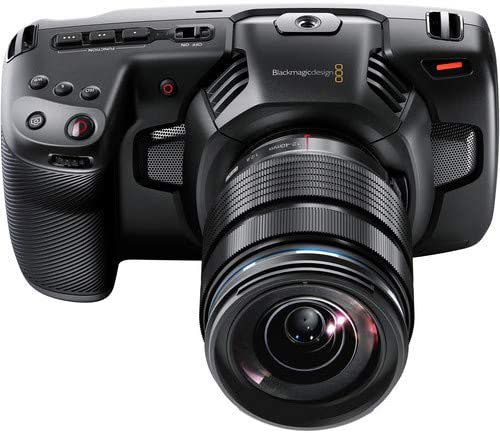

Surrounding some incredible potential, the camera is associated with a pricing tag of $1295 for the body only.
Being a ravishing first and foremost professional cinema camera, the Blackmagic 4K comprises some out-of-world features; let’s count them.
- The camera has a four-thirds 18.96 * 10mm CMOS sensor that works for managing the resolution of the imagery.
- The camera allows filmmaking in Ultra HD 4K at the highest speed of 120p and the full HD at 60p speed.
- The camera also allows internal recording, and for that, it supports the in-built stereo mic, NTSC broadcast, and IP streaming.
- The camera also uses the four-third sensor crop modes to shoot slow motion and other creative modes.
- The Blackmagic 4K also has the Native dual ISO with a sensitivity range from ISO 100 to ISO 25600 maximum for better illumination.
- The camera is experienced with the dynamic range, which uses 13 stops to catch the details in the frame.
- The camera 4K is configured with one HDMI video interface, a 3.5mm mic and headphone interface, and one Weipu power interface.
- For wireless connection stabilization, the camera uses the upgraded Bluetooth control simply for data transfer and stuff.
- The camera doesn’t encourage the viewfinder, but you can use an additional viewfinder as an optional display.
- The marvelous fixed touch screen LCD panel is designed with the camera, the display with resolution 1920 * 1080, and the largest size of 5 inches.
- For storage purposes, the camera has a dual slot for SDHC or CFexpress fast cards that also avoid buffering during the shot.
- The Blackmagic 4K camera supports the micro four-thirds lens mount and can engage with the iris, focus, and zooming control of the lens.
- The camera encourages the longest power for constant operation, with the Canon LP-E6 battery type granting at most 40 minutes of filming.
- The camera has the strongest and most rigid body composed of polycarbonate and carbon fiber material that ensures the least weight of 1.5 pounds.
Frequently Asked Questions (FAQs)
Q. Why do I have to choose a good gimbal?
Gimbals are the wise tool that decides your camera’s photography fate, so it’s utterly important to choose the gimbal for your own footage’s sake. Keep in mind one thing about stabilization before choosing a gimbal, make sure you are getting the one that can fulfill the obligations of stabilization perfectly.
So before making up your mind, you need to make sure you are getting a gimbal that processes quality stabilization and that comes under your budget because spending tons of money on something you don’t want to buy is not a wise choice. A non-ideal gimbal can not only destroy the footage quality but also negatively impact your camera, lens, or gimbal life so getting the right gimbal is key.
Q. Is Blackmagic 6K better than 4K?
Well, if you consider the primary abilities, yes, Blackmagic 6k is better than 4K because of its revolutionary upgrades and advancement. Since the 6k is the latest launch, the brand tried to put as much innovative competency as they could. But there is one major limitation with 6K is a professional camera with a larger body and high configuration, making it challenging to use.
Blackmagic 4K is one of the most compact cameras with the smallest body and least weight, making it highly travel-friendly. And then the straightforward configuration makes it easiest to use. 4K does have the simplest user-friendly interface, which sophisticatedly engages the easiest operation. And then the price is much lesser than the 6K, so if you want to explore photography, but you are tight on the budget, this may be the fit.
Q. Which gimbal brand is best?
Gimbals are the one essential modern tool that is empowered to grant impressive results, but only if they are drawn from an authentic brand. There are some wonderfully potent brands that are hell-bent on curating high-quality gimbals, ensuring the user’s long-term satisfaction and peace of mind.
Some well-known suppliers are DJI, and Zhiyun, the ultimate brands for granting professional tools, while the Moza and Feiyu brands grant unforgettable results by keeping things within the budget; these brands are masters in creating a unique piece of tool.
However, you can explore other brands too but make sure you cross-check the market value of the brand. This can ensure my going through the brand feedback, ratings, and service year analysis.
Q. Is balancing the gimbal hard?
Not certainly, Gimbals are the tool designed on the concept of comfortability and ease, which is why they aren’t supposed to be challenging or hard. But the balancing and mounting stuff cannot be said the same for all of the gimbals because each of them features a different way of balancing.
Some of the modern gimbals fascinatedly have the quick-release mounting system, which makes it easy to balance and requires just an attach, slide and lock mechanism, while the traditional one uses the traditional mounting with an Allen key which may be a little challenging but secure in the way.
To make balancing easiest, the gimbal also encourages having the axis locks, auto-calibration or fine-tuning, and stuff. So, no, the whole balancing part is easiest as pie.
Wrapping up
There is literally no matter of explaining why a gimbal can be super beneficial to your regular or professional filmmaking project. These are the ultimate option to ensure that dreamy, cinematic-looking effect, and that too without much effort, if you may ask. Black magic pocket camera 4K is indeed a professional tool, but the camera lacks the ability to go after sharp and smooth footage.
No matter how good you are at videography or photography, a little help from a gimbal can always make things enticingly cheerful, and now that you have your options, why don’t you go ahead and put your hands on the perfect model? Whatever your choice is, don’t forget to let me know in the comment section below.
Closing in, it’s quite simple how the best gimbal can grant you the chance to record smooth and steady shots, but which one will it be, the DJI RS 2 beast? The convenient and smart choice DJI RSC 2 or the budget-friendly Weebill 3, let me hear all about it.
Also, if you liked what you read so far, share it with others to grant guidance to other strugglers; Or, if you need some extra insight into filmmaking in general, read some of the other articles below.
Until we meet next time

